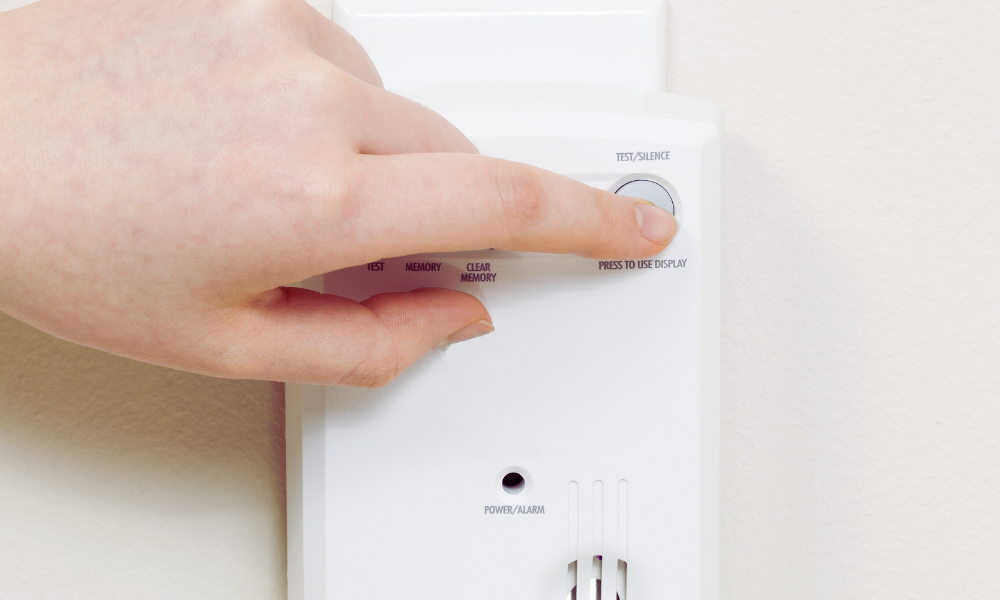
Ontario homeowners, landlords, and tenants are getting new safety rules in 2026. The province is updating carbon monoxide (CO) alarm laws to protect more people from this invisible threat. Here’s what’s changing and what Brantford and Brant County residents should know.
Starting January 1, 2026, Ontario is strengthening safety measures for residents by expanding carbon monoxide (CO) alarm requirements in homes, apartments, and care facilities. These updates to the Ontario Fire Code aim to better protect people from carbon monoxide poisoning — a serious, often silent danger that can be deadly without early warning.

Under the new rules, CO alarms will be required on every storey of any home that has:
A fuel-burning appliance (such as a furnace, water heater, stove, or fireplace)
A fireplace (gas, wood, or otherwise)
An attached garage
In addition, CO alarms must be installed next to every sleeping area, ensuring residents are protected even while asleep.
These requirements will apply not only to detached and semi-detached homes, but also to:
Multi-unit residential buildings, such as condos and apartments
Care facilities, including nursing homes and group homes
Carbon monoxide is often called the “silent killer” because it’s colourless, odourless, and tasteless — meaning you won’t know it’s present until symptoms appear or an alarm sounds. Exposure to high levels can cause dizziness, nausea, headaches, confusion, and even death.
By expanding alarm requirements, Ontario is ensuring that all residents have consistent, life-saving protection, regardless of where they live.
Carbon monoxide (CO) is an invisible, odourless, and tasteless gas — often called the “silent killer.” It forms when fuels such as natural gas, propane, oil, wood, or charcoal do not burn completely. Common household sources include furnaces, water heaters, stoves, fireplaces, space heaters, generators, and even vehicles idling in an attached garage.
When carbon monoxide builds up indoors, it can quickly become dangerous. Breathing in CO reduces the oxygen in your blood, which can cause headaches, dizziness, nausea, confusion, and, in severe cases, death. Because you can’t see or smell it, having properly installed alarms is essential for every home in Brantford, Brant County, and across Ontario.

To prevent carbon monoxide poisoning and comply with Ontario’s safety laws:
Install working CO alarms in any home that has fuel-burning appliances, a fireplace, or an attached garage.
Place alarms near every sleeping area and on every level of the home to make sure everyone is alerted — even while sleeping.
Have all fuel-burning appliances inspected annually by a certified technician to ensure safe operation.
Keep vents, flues, and chimneys clear of debris, snow, and ice.
Never use BBQs, generators, or fuel-burning heaters indoors or in garages.
Test alarms monthly and replace batteries as needed. Most alarms should be replaced every 7–10 years, depending on the manufacturer’s instructions.
If your CO alarm sounds:
Leave the home immediately.
Call 911 or local emergency services from outside.
Do not re-enter until it’s declared safe.
Under Ontario law, landlords are responsible for installing and maintaining CO alarms in all rental units that require them. Tenants, in turn, are responsible for testing alarms regularly and reporting any problems to their landlord.
If you’re a landlord in Brantford or Brant County, these steps help you stay compliant with the Ontario Fire Code and ensure your tenants’ safety. If you’re a tenant, knowing how to identify carbon monoxide risks can help keep your family safe — and could save lives.
Keeping homes in Brantford and Brant County safe isn’t just about meeting requirements — it’s about building a community where families can live with peace of mind.

Even though the new rules take effect in 2026, homeowners and landlords can prepare early:
Check existing CO alarms — make sure they’re functioning properly and within their expiry date.
Add alarms where needed — every level of your home should have a CO alarm, plus one near each sleeping area.
Test alarms monthly and replace batteries as needed.
Educate your household or tenants about what to do if an alarm sounds.
If you’re a landlord or property manager, ensure all units meet the new requirements before January 2026 to stay compliant with the Ontario Fire Code and avoid potential fines.
Whether you live in Brantford, Brant County, or anywhere in Ontario, this change is an important reminder to review your home’s safety features. Having properly installed carbon monoxide alarms — along with smoke detectors — is one of the simplest and most effective ways to protect your family or tenants.